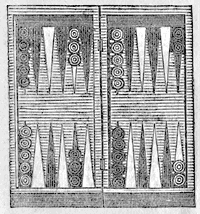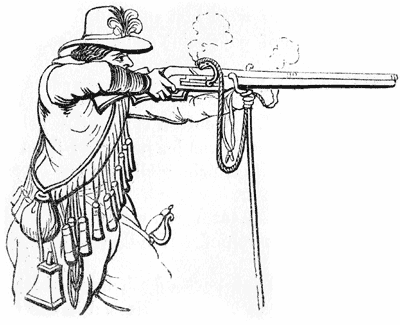|

NOTES ON ISSUE 9: GLOSSARY
PART 2 OF 3
Fluttering hopes and doubts – hopes,
of a love as yet unknown to her; doubts, of her remaining upon earth,
to enjoy that new delight – divided her breast.
Death in childbirth was frequent among women in the 18th and
19th centuries. Though statistics are scarce, we know that measures
taken in the mid-18th century to train midwives and medical
students, together with the introduction of lying-in hospitals
for the poorer classes (who had previously had access only to
the workhouse) significantly reduced the incidence of death
in childbirth. In 1749, lying-in hospital records show that
1 in 42 women died in childbirth; but by the end of the century
(1799-1800), only 1 in 913 died. Between 1779 and 1788 (Lucie’s
troubled pregnancy probably occurs in 1783), 1 in 60 women died
in labor in lying-in hospitals (George 49, 336); and though
Lucie would probably have been delivered privately, with a trained
doctor in attendance, even the best care available could not
prevent fatalities.
“…and the spirit departed from her embrace that had
been entrusted to it.”
During much of the 18th century, the infant mortality rate was as high
as or higher than 50%, and though the death rate in London decreased in
the last quarter of the 18th century and the beginning of the 19th (due
to medical developments, improved nutrition and sanitation, etc.), it
is not surprising that Lucie – giving birth in the 1780s – would lose a
child. Indeed, according to statistics in London in the Eighteenth
Century, between 1770 and 1789, 51.5% of children born in London
died under the age of five (George 406).
Sighs of the winds that blew over a little
garden-tomb were mingled with them also…
It has been suggested that the “garden-tomb” of the little deceased
Darnay would have been located in a suburban cemetery such as Highgate,
where Dickens had one of his own daughters interred in 1851 (Sanders
114). However, given the pastoral quality of Dickens’ 18th-century
London, and the fact that the ring of suburban cemeteries (of which
Highgate Cemetery is one) was not opened until 1839 (Woodley 369), the
“garden tomb” was not necessarily suburban.
Mr. Stryver shouldered his way through the law,
like some great engine forcing itself through turbid water, and dragged
his useful friend in his wake, like a boat towed astern.
The steam-engine, invented by Thomas Newcomen and improved by James
Watt in the early and mid-18th century (Quennell 178), was not widely
used in vehicles until the 19th century. Steamboats first appeared on
the Thames in 1815, and the railways (driven by steam power) were not
developed until the 1830s and 1840s in England (Meckier 182). Thus, the
image of Mr. Stryver as a kind of steamboat is more properly a
19th-century image than an 18th-century one – of Dickens’ time more
than of Stryver’s own.
…and on the diamond-cut-diamond arts in himself,
madam, which had rendered him “not to be caught.”
Diamonds are known for their extreme hardness; thus, the phrase
“diamond-cut-diamond” refers to “an equal match in sharpness (of wit,
cunning, etc.)” (OED).
“…There
is such an uneasiness in Paris, that we have actually a run of
confidence upon us! Our customers over there, seem not to be able to
confide their property to us fast enough. There is positively a mania
among some of them for sending it to England.”
A “run” on a bank is “[a] series or rush of sudden and pressing demands
made upon a bank or treasury for immediate payment” (OED), or “a
sudden movement on the part of foreign depositors to withdraw their
holdings of a nation’s currency by exchanging them for equivalent sums
in other currencies” (OED). Such runs are usually occasioned by
a lack of confidence in the bank – a concern, for instance, that the
bank will not be able to meet cash demands. A “run of confidence,” on
the other hand, seems to be the opposite phenomenon – a run of money into the bank instead of out of it.
“No, I am going to play backgammon with you, if you
like,” said the Doctor. “I don’t think I do like…. Is the tea-board
still there, Lucie, I can’t see it.”
Backgammon, which the Doctor offers to play with Mr. Lorry, is still a
popular board game. It is a “game played on a board consisting of two
tables (usually united by a hinge), with draughtsmen whose moves are
determined by throws of the dice.” The name is apparently derived from
the Middle English for “back-game” or “back-play,” because “the pieces
are (in certain circumstances) taken up and obliged to go back, that is
re-entered at the table” (OED). The Dictionary of Daily
Wants (1859) illustrates the initial configuration of the
backgammon table and gives the following description and rules of
BACKGAMMON. – A game played on a
board, divided into two parts or tables, connected by a hinge which
enables it to shut up like a box. Every table possesses twelve points,
six at each end; and these are coloured black and white alternately.
Each player has fifteen men, black and white, to distinguish them, and
they are disposed in the following manner. – Supposing the game to be
played on the right-hand table, two are placed upon the ace point in
the adversary’s table, five upon the six point in the opposite table,
three upon the cinque point in the hithermost table, and five on the
six point in the right-hand table. Each player is then to endeavour to
bring the men round into his right-hand table, by throwing with a pair
of dice those numbers that contribute towards it; and at the same time
to prevent his adversary from doing the like. The first best throw upon
the dice is esteemed ace. When the player carries his men home, in
order to lose no point, he must carry the most distant man to his
adversary’s bar point, that being the first stage he is to place it on.
The next move is six points further; viz, in the place where the
adversary’s five men are placed out of his table; and the player must
progress in this manner till all his men are brought home except two,
when, by losing a point, he may often save the gammon by throwing two
fours or two fives. When a hit is only played for, he should endeavour
to gain either his own or his adversary’s cinque point; and if that
fail, by his being hit by the adversary, and he find him further
advanced than himself, in that case he must throw more men into the
adversary’s table, which is done in this manner: – He must put a man
upon his cinque or bar point; and if the adversary neglect to hit it,
he may then gain a fo[r]ward game instead of a back game. But, if the
adversary hit him, he should play for a back game; and then the greater
the number of men which are taken up, makes his game the better,
because by these means he will preserve his game at home. He should
then endeavour to gain both his adversary’s ace and trois points, or
his ace and deuce points, and take care to keep three men upon the
adversary’s ace point, that, in case the latter hit him from thence,
that point may remain still secure to himself. The rules of
backgammon are as follows: – 1. When a man is taken from any
point, it must be played. 2. A man is not supposed to be played till it
is placed upon a point and quitted. 3. If a player have only fourteen
men in play, there is no penalty inflicted, because by his playing with
a lesser number than he is entitled to, he plays to a disadvantage for
want of the deficient man to make up his tables. 4. If he bear any
number of men before he has entered a man taken up, and which of course
he was obliged to enter, such men so borne must be entered again in the
adversary’s table, as well as the man taken up. 5. If he have mistaken
his throw and played it, and his adversary have thrown, it is not in
the choice of either of the players to alter it, unless they both agree
so to do. (79)

A “tea-board,” which Mr. Lorry asks for
in preference to the backgammon board, is a tea-tray, usually made of
wood (OED).
Saint Antoine had been, that morning, a vast dusky
mass of scarecrows heaving to and fro, with frequent gleams of light
above the billowy heads, where steel blades and bayonets shone in the
sun.
Bayonets, by the time of the French Revolution, had been in use for
over a hundred years. According to Fairholt’s 1860 Costume in
England, A History of Dress, bayonets were “first mentioned in
about 1647 in the Memoirs of Puységur, and [were] first
introduced in the British Army in 1672” (358). Fairholt defines a
bayonet as “[a] dagger affixed to the end of a gun” (358), and gives
the history of the bayonet – its invention, use, and development – as
follows:
[The
late 17th century saw the] introduction of the bayonet, which received
its name from the place of its invention, Bayonne, from whence it
rapidly spread all over Europe. It was originally a dagger with a
wooden hilt, that could be pushed or screwed into the mouth of a gun…;
consequently the gun was useless as a fire-arm while the bayonet was
thus inserted; and it was not until our English soldiers, serving under
William III in Flanders, felt the heavy fire of the opposing French
from bayoneted guns, while their own were powerless and
stopped up by the weapons they had screwed into their muzzles for a
charge, that they learned how to combine the full efficacy of both
weapons at once. (277)
Originally of French origin (Bayonne is
a town in the Basque country of southern France), and perfected by
French troops, the bayonet was in use in France long before making its
appearance among the revolutionaries of 1789.
…muskets were being distributed – so were
cartridges, powder, and ball, bars of iron and wood, knives, axes,
pikes, every weapon that distracted ingenuity could discover or devise.
Fairholt’s Costume in England, A History of Dress (1860)
describes the musket as follows:
MUSKET. A
long heavy gun introduced from Spain, and which eventually
displaced the arcubos [an early fire-arm described as an “improvement
on the hand-cannon,
or gonne, of the middle ages” invented
toward the end of the 15th century (343)] and hackbut [described as an “arquebus
with a hooked stock” (469)]. It is represented in fig.
320 [see below], from a Dutch print by L. Gheyn, temp. James
I., which shows the mode of firing, the use of the rest (rendered
necessary by the weight of the piece), and the bandoleers,
bullet-bag, powder-flask, and the match-cord of twisted tow
with which it was fired. (535)

A musket-rest was a “staff with a
forked head to rest the musket on when fired, having a sharp iron
ferule at the bottom to secure its hold in the ground. Musket-rests
were carried by soldiers in the right hand, or held by a looped ribbon
tied beneath the fork” (Fairholt 536).
Knives, axes, pikes and so forth are weapons of a more primitive
description. Pikes, for instance, were the chief armament of the
British army until the reign of Queen Anne (1702-1714), when uniforms
replaced body-armor and “the musket and socket bayonet became the
general weapons of the infantry” (Planché 418). Axes and knives
are of similar antiquity, and – like the impromptu weaponry of “bars of
iron and wood” – were readily available and easily appropriated from
domestic uses.
|

